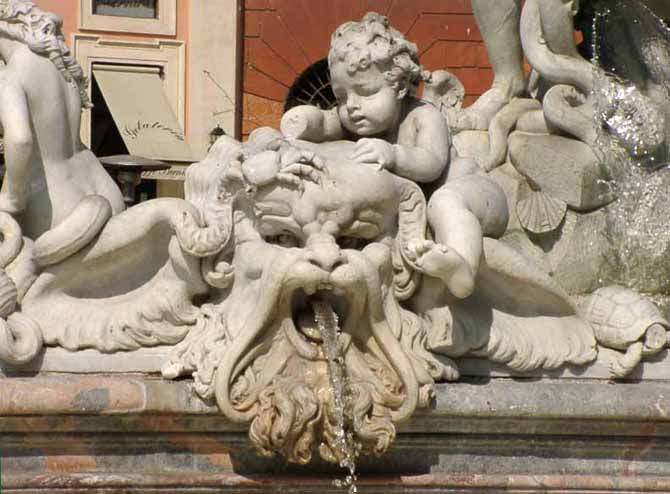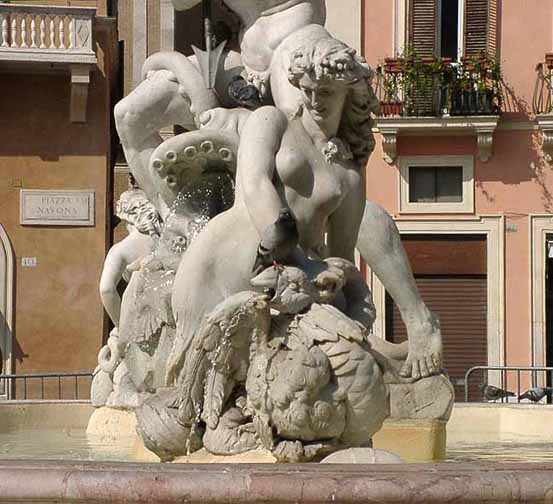Piazza Navona - Table of Contents ................. Architecture Around the World
2002, 2013 photos
Fountain of Neptune
Piazza Navona, Rome, Italy
| Buit: |
1873-78 |
| Designer: |
by Antonio della Bitta |
| Sculptor: |
Gregorio Zappalą, for the group of statues consisting of sea-horses, putti, dolphins and mermaids. |
| Style: |
Baroque Revival (Neo-Baroque) |
 Note Fountain of Four Rivers (with obleisk on top) center right in the photograph.  Note Fountain of Four Rivers (with obleisk on top) towards the right of the photograph.   "Neptune Fighting With an Octopus"    Buffalo's Sophie Gordon just before she was reprimanded by a nun for wading in Piazza Navona on a 90 degree August day in 2010.   |
In the 1st century great athletic contests were held in Emperor Domitian's stadium, built in 86AD. which has given the square its long oval shape.
In the 15th century jousts were held here, but the stadium was paved over and the Piazza Navona was created.
Pope Innocent X commissioned many of the piazza's landmarks in honor of his family whose mansion stood at the southwest end (now the Brazilian embassy). The most famous of these landmarks, at the piazza's center is the Fountain of the Four Rivers, designed in 1651 by Bernini (who won the commission by bribing the Pope's highly influential sister-in law with a silver model of his proposed work).
At the piazza's south end is the Fountain of the Moor, also by Bernini, and at the north end is the 19th century Fountain of Neptune. At the mid west side, facing the Fountain of the Four Rivers, is the pope's family church, St. Agnese in Agone (the inside is unexceptional but the facade was done by Borromini).
Fountain of Neptune (Fontana del Nettuno)
The restoration of the Roman Aqua Virgo aqueduct took place in 1570. Restoration in turn permitted the construction of several public fountains. The basin part of the Fontana del Nettuno, (without the sculptures) was designed in 1574 by Giacomo Della Porta, who also designed the Moor Fountain at the other side of the square. It was sponsored by pope Gregory XIII. The lower part of the basin consists of white marble and the upper part of the local stone from Pietrasanta. For the next 300 years, the fountain survived without statues.